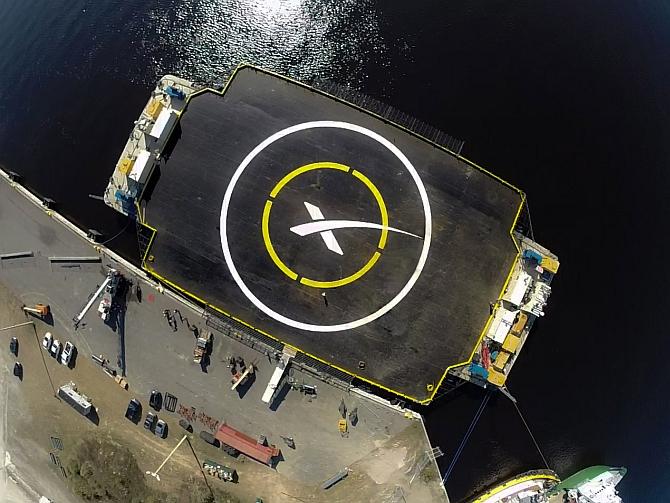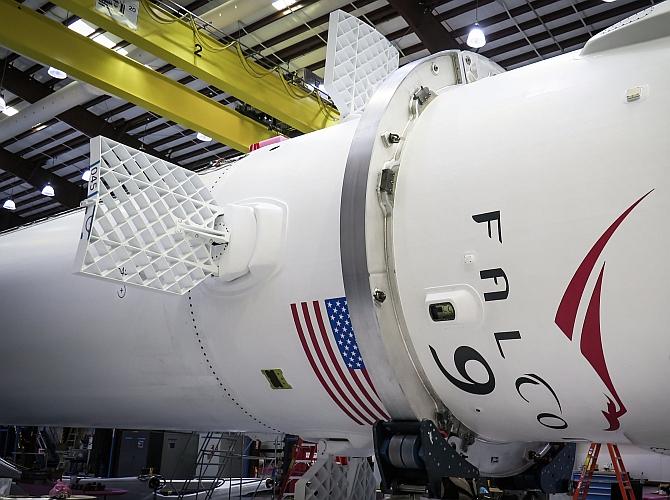 | « Back to article | Print this article |

What goes up must come down. In the science of rocketry, it always comes down with a thud.
But that equation may change somewhat on Tuesday as SpaceX tries to land a rocket on earth. Rocket Falcon 9 launching from Cape Canaveral Air Force Station with goodies is headed for the International Space Station.
How?
Well Elon Musk, the Canadian American inventor behind the iconic electric car company Tesla and who also owns SpaceX, hopes to hopes to land the Falcon 9 rocket engines (that would jettison after the first stage of the launch) on a barge-like vessel called the ‘autonomous spaceport drone ship’ waiting in the ocean.
The odds of success are not great -- perhaps 50 per cent at best. However, this test represents the first in a series of similar tests that will ultimately deliver a fully reusable Falcon 9 first stage.
Back in October, Musk had said: "If one can figure out how to effectively reuse rockets just like airplanes, the cost of access to space will be reduced by as much as a factor of a hundred. A fully reusable vehicle has never been done before. That really is the fundamental breakthrough needed to revolutionize access to space."
Musk’s Space Exploration Technologies Corporation has attempted similar manoeuvres on three earlier Falcon 9 flights, and on the second and third attempts, the rocket slowed to a hover before splashing into the water, the New York Times reported.
“We have been able to soft-land the rocket booster in the ocean twice so far,” NYT quoted Musk as saying, adding, “Unfortunately, it sort of sat there for several seconds, then tipped over and exploded. It’s quite difficult to reuse at that point.”
Tuesday's SpaceX CRS-5 launch will deliver CATS, a laser instrument to measure clouds and the location and distribution of pollution, dust, smoke, and other particulates in the atmosphere, besides over 5,000 pounds of supplies and equipment, including an IMAX movie camera and a laboratory habitat for studying fruit flies.
This is the fifth of 12 space-station resupply missions SpaceX is contracted to perform. NASA is paying SpaceX $1.6 billion for the five-year deal that began in 2012.
The launch is crucial for NASA, which received tremendous flak when its Antares rocket, carrying 5,055

